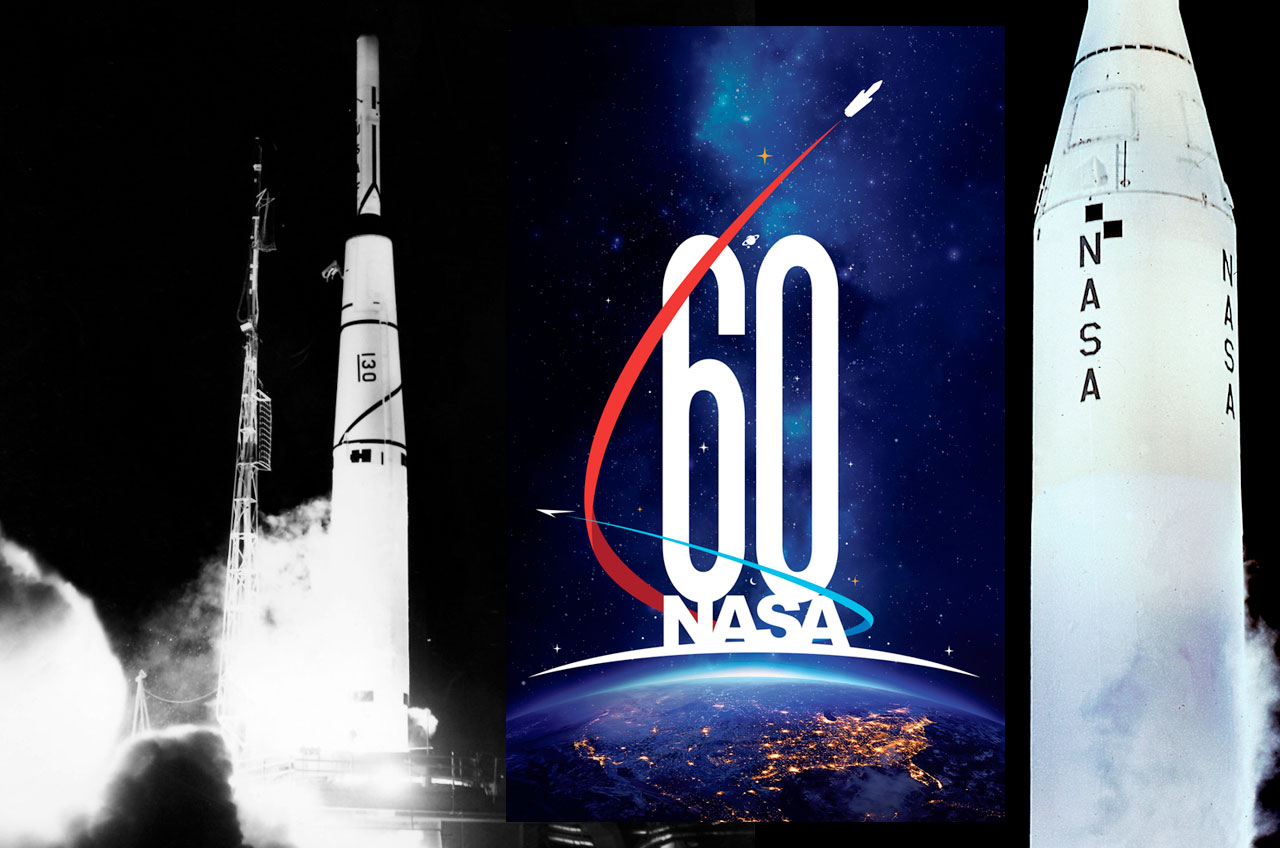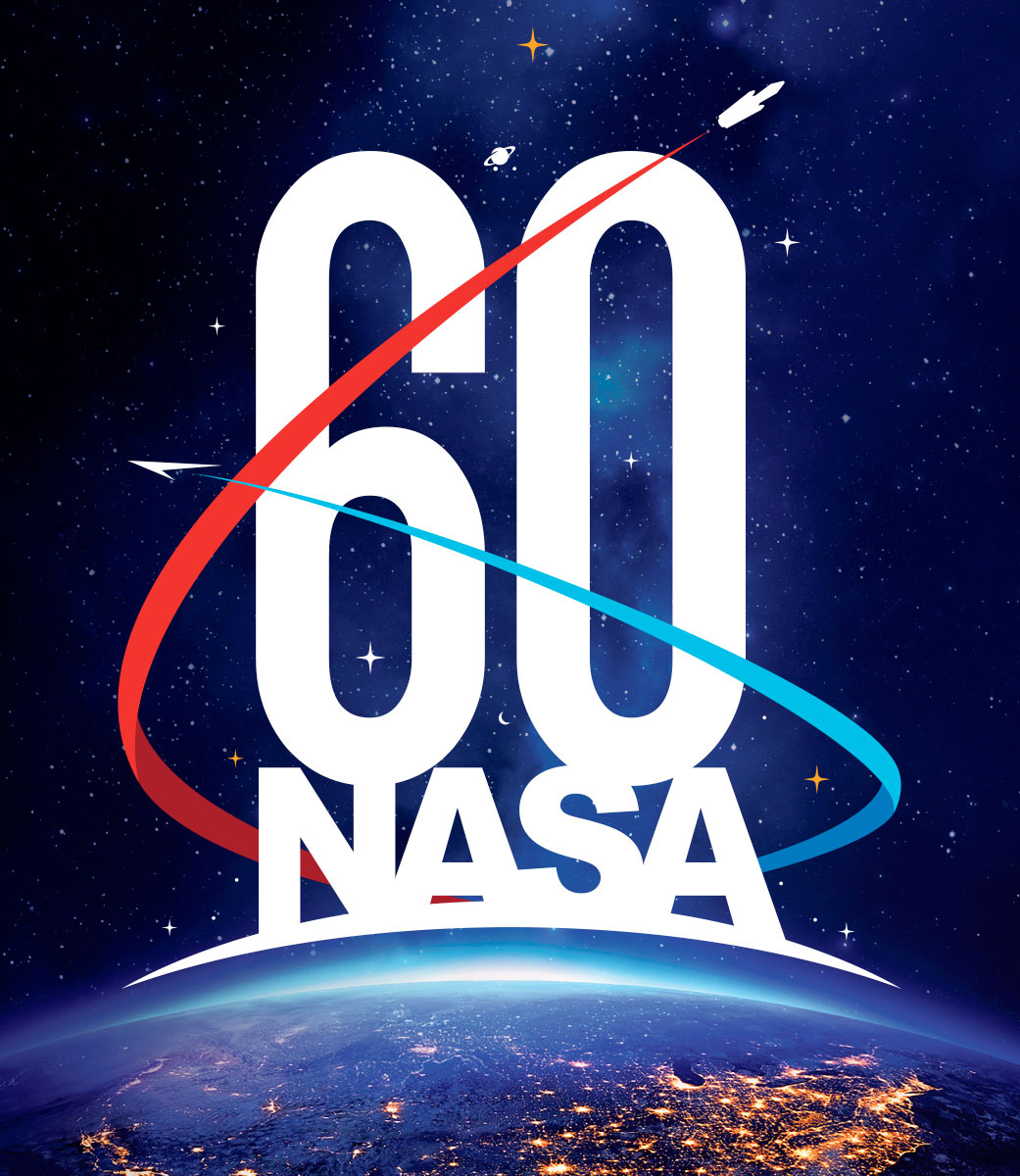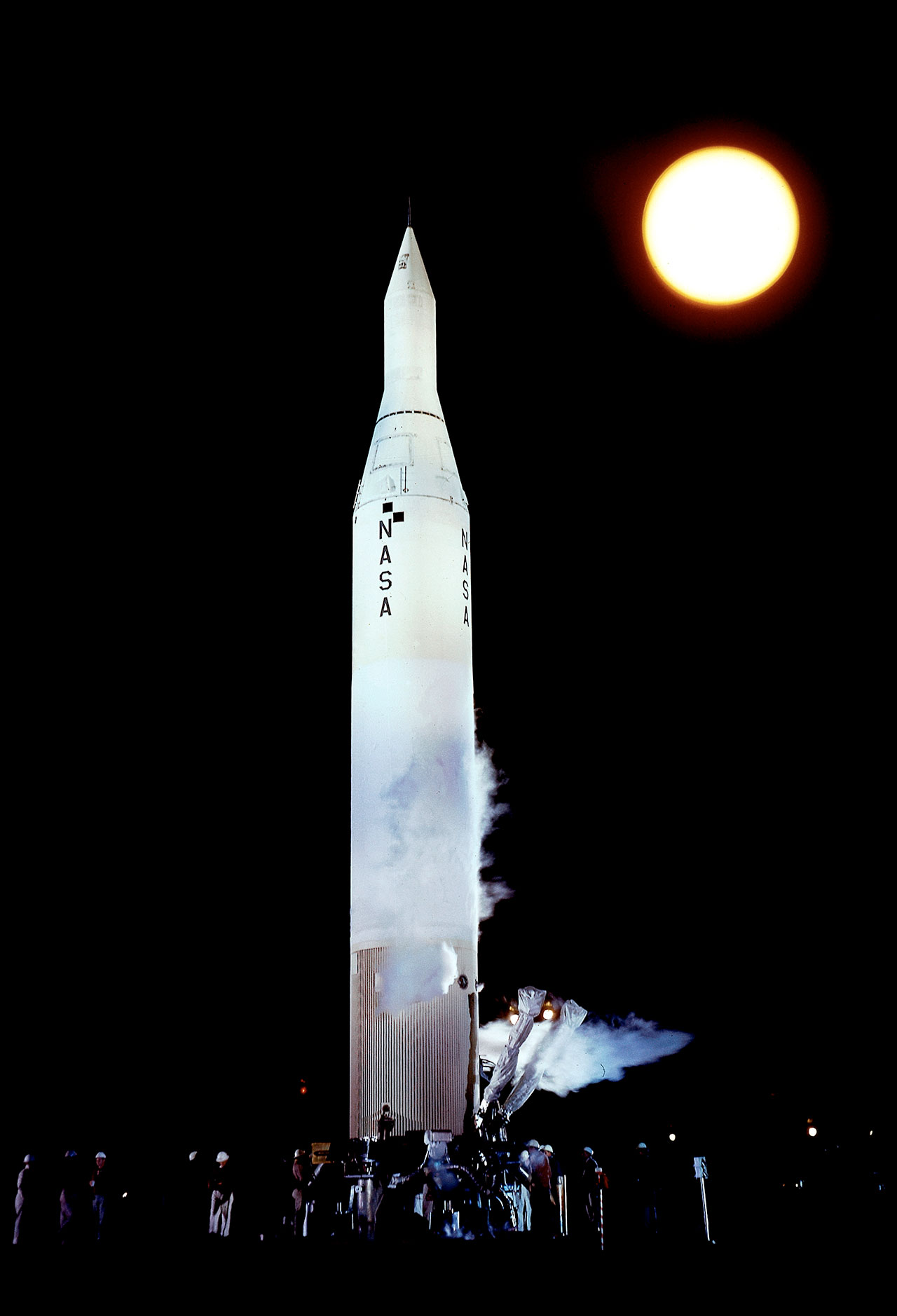Sixty Years Ago, NASA Opened for Business with First Try at Moonshot

Ten days after it officially began operations in 1958, NASA attempted its first moonshot.
Sixty years ago Monday (Oct. 1), NASA, or the National Aeronautics and Space Administration, opened for business, as authorized by Congress and President Dwight D. Eisenhower the previous July. The nascent civilian agency was tasked with planning, directing and conducting the nation's aviation and space activities.
As its first order of business, NASA launched an inherited mission — the second try by the U.S. to send a probe to the moon. [Best Spaceflight and Space History Books]
L-minus 10 days
NASA emerged from the shadow of Sputnik. Launched Oct. 4, 1957, the world's first satellite marked the Soviet Union's first lob in the burgeoning space race with the United States. By the time NASA opened its doors a year later, the score was three to four satellites in Earth orbit — with the U.S. in the lead.
Of those four early U.S. launches, three were conducted by the Army Ballistic Missile Agency (ABMA) and one was overseen by the Navy. The latter, Vanguard 1, remains in orbit today, 60 years later, and is not expected to fall back to Earth for another 200 years.
On Aug. 17, 1958, two months before NASA came to be, the Advanced Research Project Agency and the Air Force attempted the world's first launch of a probe out of Earth's orbit. Lifting off from Launch Complex 17A at the Eastern Test Range (now Cape Canaveral Air Force Station) in Florida, a modified Thor ballistic missile carried the Able 1 probe skyward.
The squat, conical spacecraft weighed 80 pounds (36 kilograms) and was painted with black and white stripes to help control its internal temperature. Its mission was to record thermal radiation levels using an infrared TV scanner to measure reflected light from the lunar surface.
Breaking space news, the latest updates on rocket launches, skywatching events and more!
Able 1, though, never came close to the moon. Seventy-seven seconds into flight, the Thor's first stage exploded 3 miles (15 kilometers) off the ground.
The ABMA and Air Force were preparing to try again when NASA took over. The launch of Able 2 — now renamed Pioneer 1 — was poised for Oct. 11, 1958, just 10 days into NASA's history.
If at first...
The launch was set for 4:42 a.m. EST (0842 GMT) from Cape Canaveral. As with the prior attempt, a Thor missile stood poised to loft the 30-inch-tall (75-cm) Pioneer 1 to the moon (the earlier Able 1 was retroactively renamed Pioneer 0).
With NASA at the helm, the ABMA and Air Force now served as consultants on the mission.
Like its ill-fated predecessor, Pioneer 1 was aimed at scanning the lunar surface in infrared and was equipped with a microphone to detect micrometeorites as well as a spin-coil magnetometer to measure magnetic fields.
If successful, it would be NASA's first moon mission, 11 years before it would send astronauts to land on its surface.
Unfortunately, it was not to be. A guidance error resulted in a premature cut off of the Thor's second stage, which in turn caused the second and third stages to bump into each other during separation. An attempt to regain enough velocity to head off for the moon fell short and, unable to escape the pull of Earth's gravity, Pioneer 1 re-entered the atmosphere 43 hours and 17 seconds after it launched.
But NASA's first mission was not a total failure. Pioneer 1 reached an altitude of about 71,800 miles (114,000 kilometers), high enough for its instruments to return data about the Van Allen radiation belts and micrometeorite impact rates.
'NASA' in space
NASA followed up Pioneer 1 with Pioneer 2, an upgraded, third attempt at sending a probe to the moon, but that too failed after lifting off on Nov. 8, 1958.
It took another four months before NASA could claim a success. Pioneer 4, which launched on March 3, 1959, flew within 37,300 miles (60,000 km) of the moon and returned radiation data about cislunar space.
But it was neither Pioneer 1, 2 or 4 that was the first to put "NASA" in space. The first two probes launched after the space agency was "born" flew on Thor missiles with U.S. Air Force markings. Rather, it was the launch of Pioneer 3 on Dec. 6, 1958 — while not successful — that was the first to use a rocket emblazoned with the letters "N-A-S-A" on its side.
In the 60 years since, NASA has launched more than 200 missions, including 76 lunar and planetary missions, 32 astronomy missions, 116 satellites to study Earth and more than 160 human spaceflight missions.
Follow collectSPACE.com on Facebook and on Twitter at @collectSPACE. Copyright 2018 collectSPACE.com. All rights reserved.

Robert Pearlman is a space historian, journalist and the founder and editor of collectSPACE.com, a daily news publication and community devoted to space history with a particular focus on how and where space exploration intersects with pop culture. Pearlman is also a contributing writer for Space.com and co-author of "Space Stations: The Art, Science, and Reality of Working in Space” published by Smithsonian Books in 2018.
In 2009, he was inducted into the U.S. Space Camp Hall of Fame in Huntsville, Alabama. In 2021, he was honored by the American Astronautical Society with the Ordway Award for Sustained Excellence in Spaceflight History. In 2023, the National Space Club Florida Committee recognized Pearlman with the Kolcum News and Communications Award for excellence in telling the space story along the Space Coast and throughout the world.



